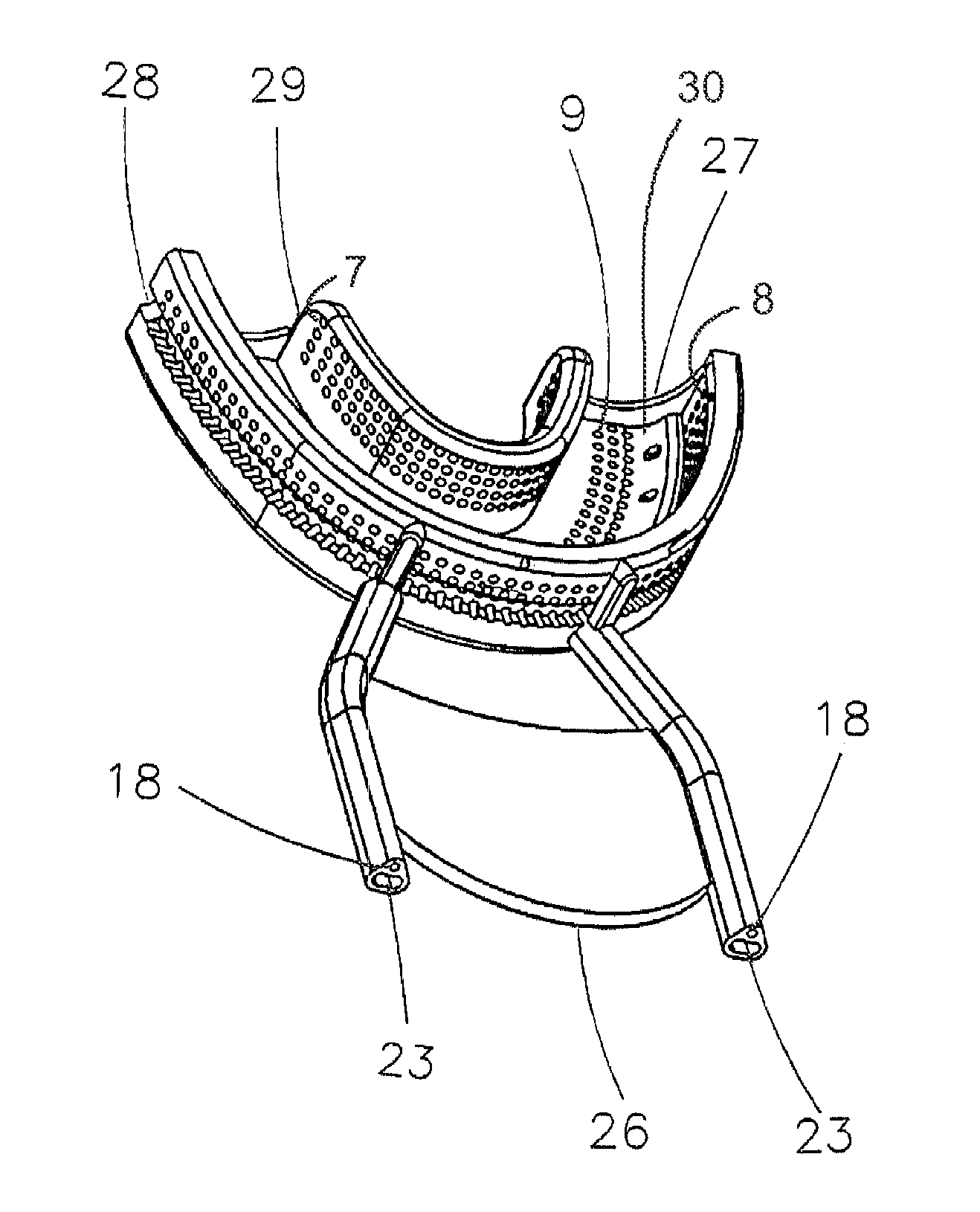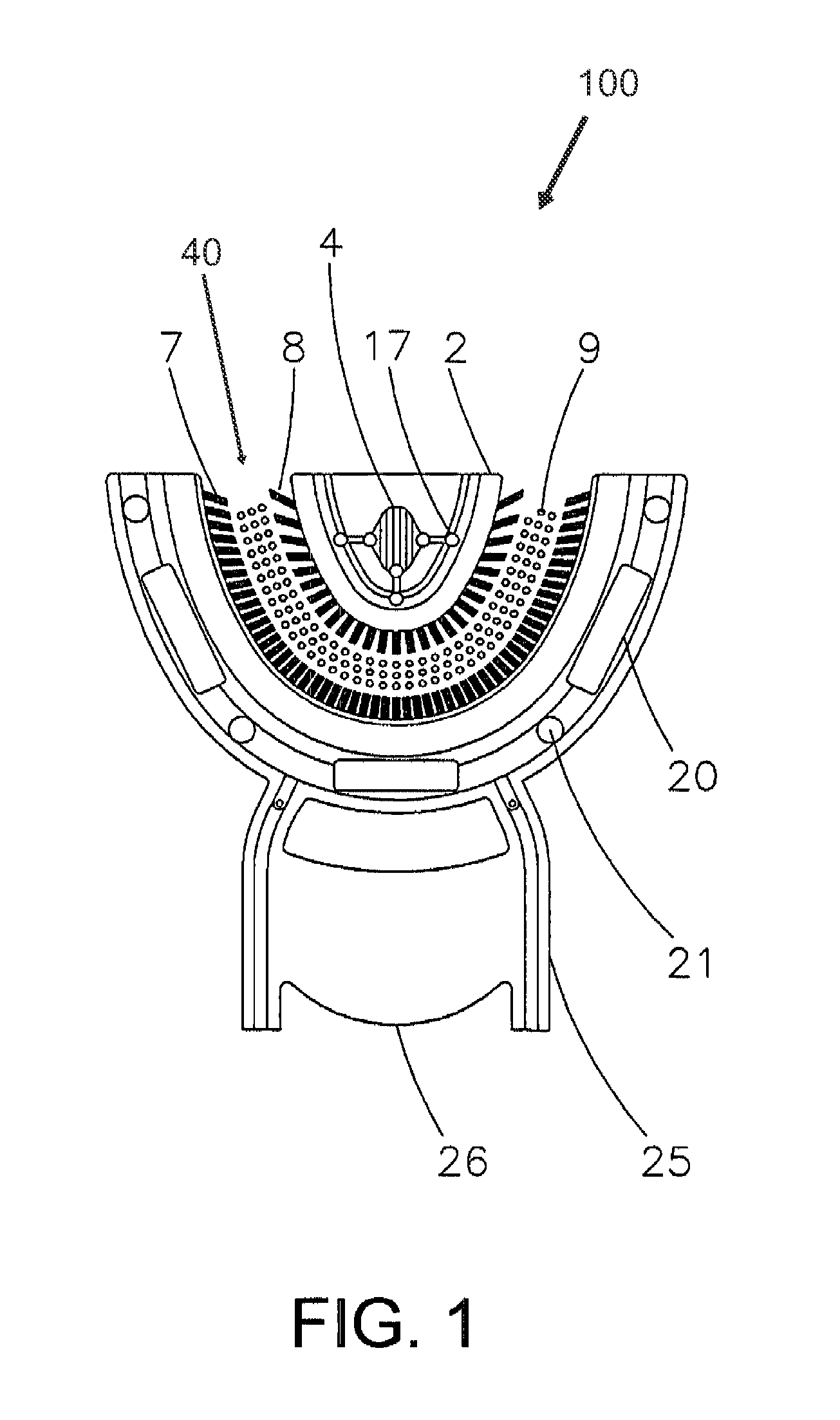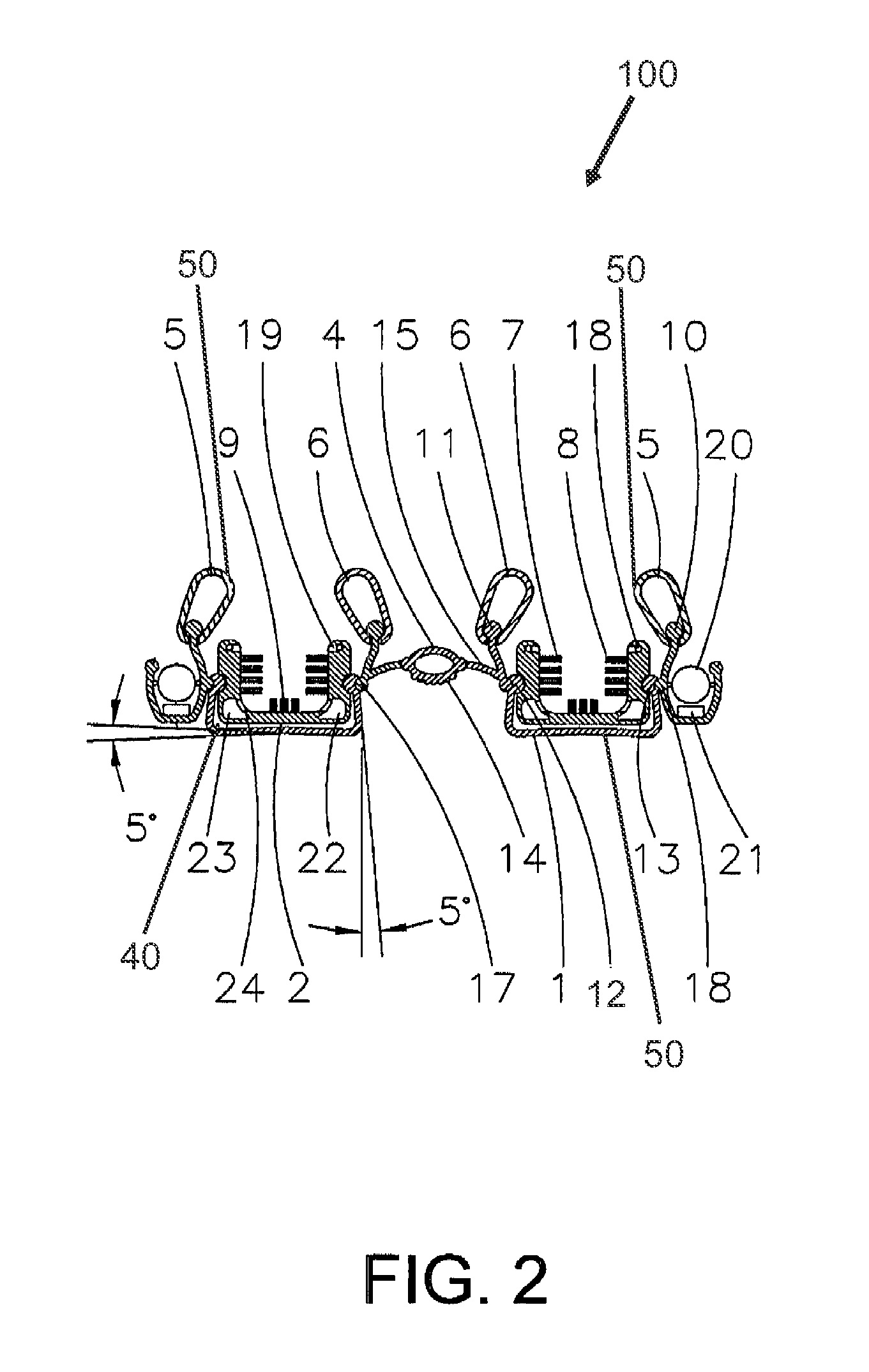Hands Free Oral Hygiene System
a technology of oral hygiene and hands-free, applied in the field of dental hygiene system, can solve the problems of many people not knowing or understanding how to properly clean their teeth, the conventional oral care method requires a significant number of steps, and many people not being able to properly clean teeth, etc., and achieves the effect of facilitating better compliance and effective oral treatmen
- Summary
- Abstract
- Description
- Claims
- Application Information
AI Technical Summary
Benefits of technology
Problems solved by technology
Method used
Image
Examples
Embodiment Construction
[0030]The following detailed description illustrates the invention by way of example, not by way of limitation of the principles of the invention. This description will enable one skilled in the art to make and use the invention, and describes several embodiments, adaptations, variations, alternatives and uses of the invention, including what is presently believed to be the best mode of carrying out the invention.
[0031]Referring to the figures in detail and first to FIGS. 1-2, there is shown an exemplary embodiment of a hands-free oral hygiene system for cleaning teeth and gums. FIGS. 1-2 illustrate oral hygiene system 100 formed within the structure of a mouthpiece frame 1. The mouthpiece 1 is elastic and can conform to the shape of a user's oral cavity (i.e., mouth). The mouthpiece 1 may be created using any material that is safe for intraoral contact and has elastic characteristics. For example, the mouthpiece 1 can be made of rubber, polyurethane, or another polymer. The mouthpi...
PUM
 Login to View More
Login to View More Abstract
Description
Claims
Application Information
 Login to View More
Login to View More - R&D
- Intellectual Property
- Life Sciences
- Materials
- Tech Scout
- Unparalleled Data Quality
- Higher Quality Content
- 60% Fewer Hallucinations
Browse by: Latest US Patents, China's latest patents, Technical Efficacy Thesaurus, Application Domain, Technology Topic, Popular Technical Reports.
© 2025 PatSnap. All rights reserved.Legal|Privacy policy|Modern Slavery Act Transparency Statement|Sitemap|About US| Contact US: help@patsnap.com



